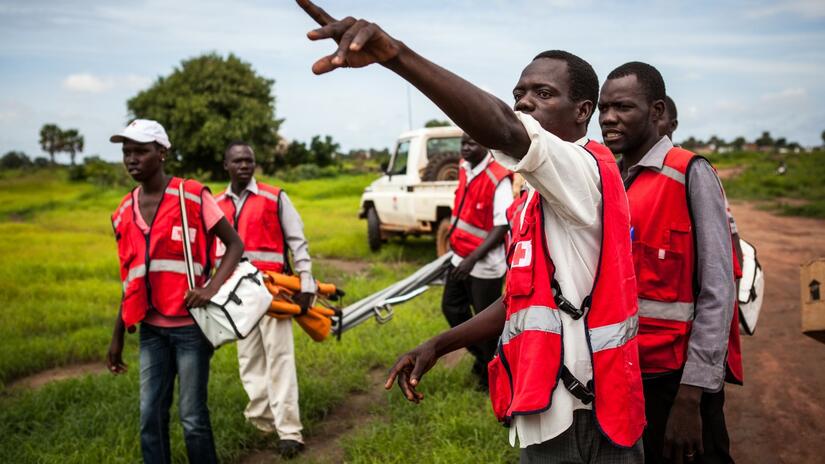Disaster preparedness
Preparing for disasters saves countless lives, speeds up people’s recovery and saves money. The IFRC supports National Societies to continually improve their local preparedness and response capacity—ultimately preventing and reducing the impacts of disasters on communities.
Our work
The need to prepare for a world of unexpected shocks has become clearer than ever. Epidemics, floods, storms, droughts and wildfires are all expected to become more frequent and severe, affecting hundreds of millions of people every year.
Red Cross and Red Crescent Societies around the world, supported by the IFRC, are working to improve their preparedness for disasters. This includes:
- Coordinating with national authorities and partners to know what risks and hazards to prepare for
- Training and equipping millions of volunteers as first responders to a wide range of hazards
- Researching new technologies to improve their response
- Working with communities to understand the needs of those most at risk
- Setting up early warning systems so communities can take early action before a disaster hits
Disaster preparedness isn’t just the right thing to do, it’s the smart thing to do. We must step up action and investment in preparedness now, rather than waiting for the next disaster to hit.
Scroll down to learn how we support National Society preparedness.
Watch: An introduction to National Society preparedness
Preparedness for Effective Response (PER)
Preparedness for Effective Response (PER) is our cyclical approach designed to help us analyze capacities, strengths and weaknesses within a National Society’s response system. It is based on decades of collective experience in preparedness and disaster response across our global network.
Our vision is that all National Societies continually improve their ability to respond to disasters in a way that is timely, appropriate, well-coordinated, relevant and effective.
The PER approach is made up of five phases:
- Orientation: We explain the approach to a National Society and discuss which internal and external risks and hazards they want to prioritize.
- Assessment: We assess a National Society’s current response system to identify areas for improvement. This can be done through self-assessment, disaster simulations or reviews during or following an operation.
- Prioritization and analysis: The National Society then narrows down which areas of its work it wants to focus on and conducts in-depth analysis to identify the barriers they need to overcome.
- Workplan: Based on this analysis, we help the National Society develop a road-map to increase its response capacity. This includes outcomes, outputs, activities, timelines, targets and a clear accountability framework.
- Action and accountability: The National Society puts their workplan into action, continually monitoring and reporting on their progress in the long-term.
Find out more

South Sudan Red Cross volunteers practise their response skills as part of an emergency action team simulation in 2013
Photo: IFRC/Juozas Cernius
To find out more about Preparedness for Effective Response (PER):
- Download the PER leaflet below
- Sign up to our National Society preparedness newsletter. Previous editions are available to read here.
- For real-time preparedness data, visit the preparedness section on our data platform: IFRC GO
- Take our Preparedness for Effective Response eLearning course on the IFRC Learning Platform.
- If you are from a National Society and are interested in the PER approach, contact [email protected]
Explore areas of preparedness
Epidemic and pandemic preparedness
We engage and train people worldwide in epidemic preparedness and response. We help them prevent, detect and quickly respond to outbreaks—saving countless lives and promoting healthier communities.
Technological and biological hazard preparedness
The IFRC supports National Societies worldwide to effectively prepare for and respond to technological emergencies using a multi-hazard approach.
Contingency planning
Contingency planning means preparing an organization to be ready to respond effectively in the event of an emergency. Time spent in contingency planning equals time saved when a disaster strikes.
Watch: preparedness videos
Related documents
Digital Transformation Impact Platform Brochure
Read more
Preparedness for Effective Response Leaflet and Case Studies
Read more
Indonesia: Epidemic preparedness and response
Read more
Case study: Measles immunization in the Democratic Republic of the Congo
Read more
